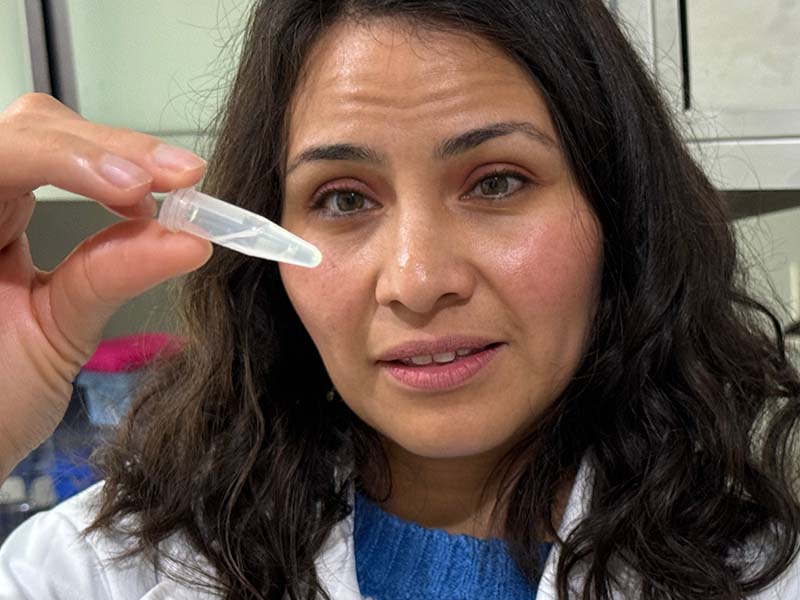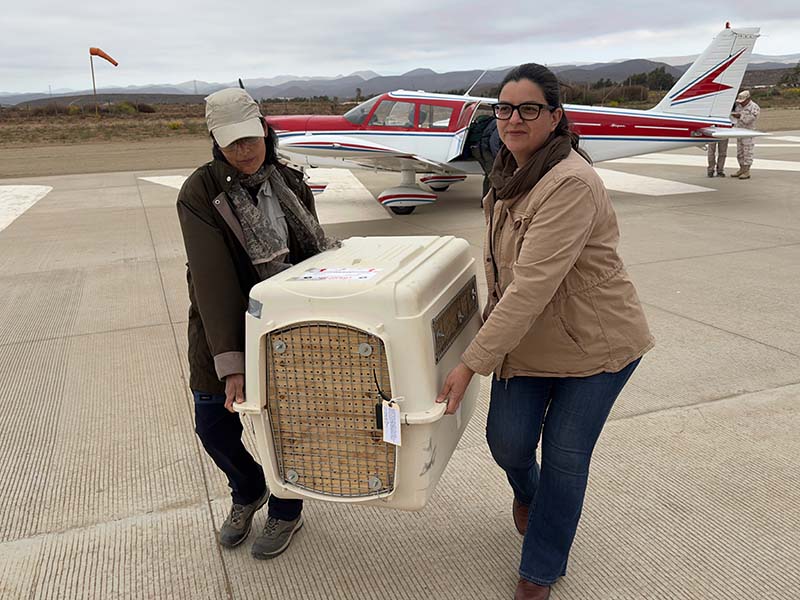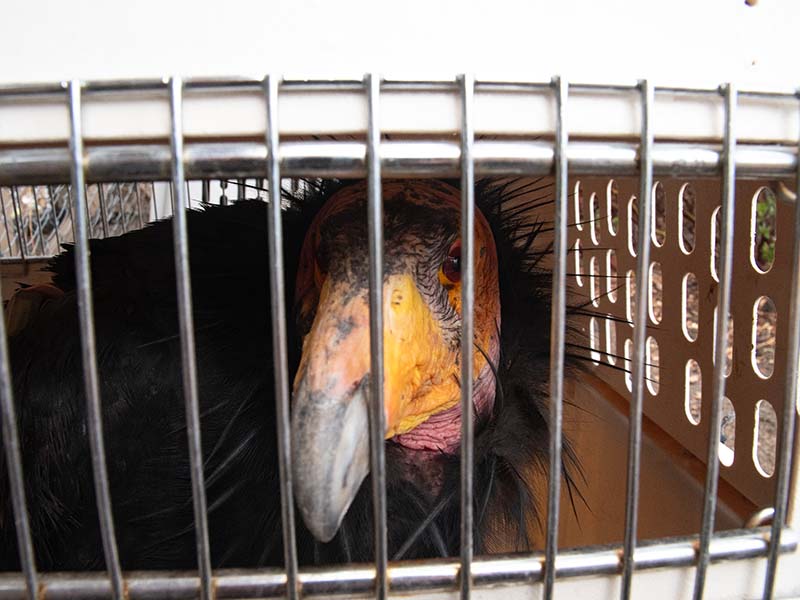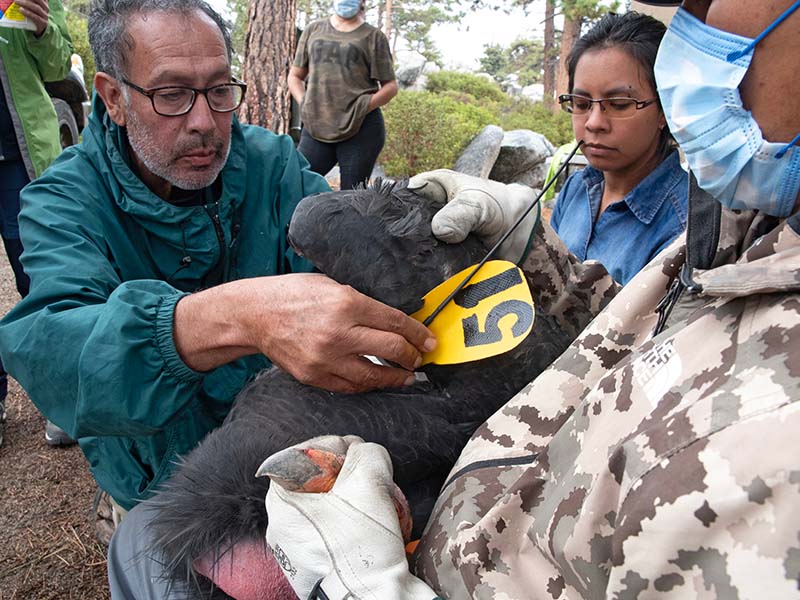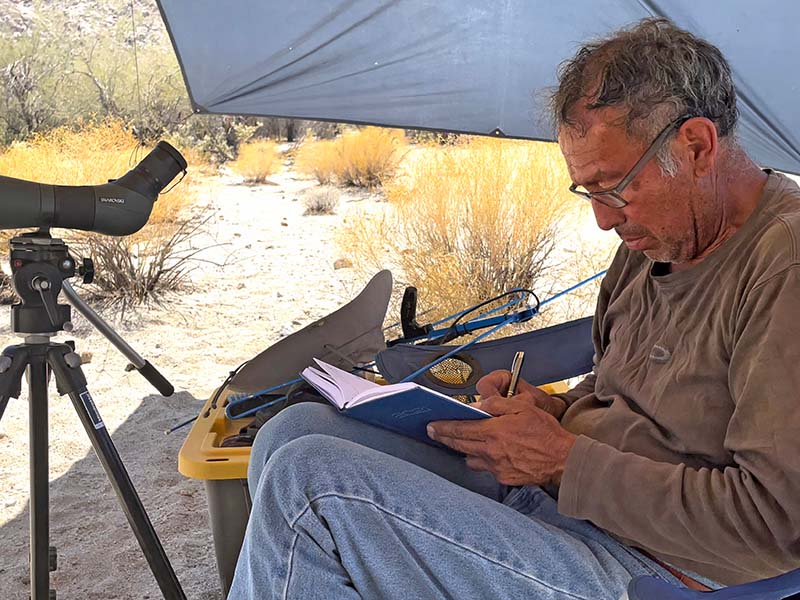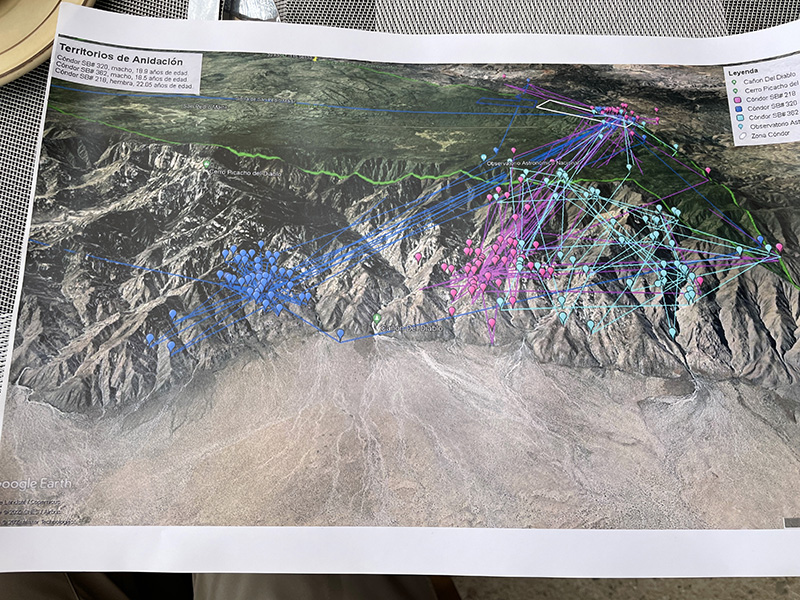Return of the California condor
North America’s largest bird disappeared from the wild in the late 1980s. Reintroduction work in the United States and Mexico has brought this huge vulture back to the skies. This is the story of its comeback.
Support sound science and smart stories
Help us make scientific knowledge accessible to all
Donate today
The spring morning is cool and bright in the Sierra de San Pedro Mártir National Park in Baja California, Mexico, as a bird takes to the skies. Its 9.8-foot wingspan casts a looming silhouette against the sunlight; the sound of its flight is like that of a light aircraft cutting through the wind. In this forest thick with trees up to 600 years old lives the southernmost population of the California condor (Gymnogyps californianus), the only one outside the United States. Dozens of the scavenging birds have been reintroduced here, to live and breed once again in the wild.
Their return has been captained for more than 20 years by biologist Juan Vargas Velasco and his partner María Catalina Porras Peña, a couple who long ago moved away from the comforts of the city to endure extreme winters living in a tent or small trailer, to manage the lives of the 48 condors known to fly over Mexican territory. Together — she as coordinator of the California Condor Conservation Program, and he as field manager — they are the guardians of a project whose origins go back to condor recovery efforts that began in the 1980s in the United States, when populations were decimated, mainly from eating the meat of animals shot by hunters’ lead bullets.
In Mexico, the species disappeared even earlier, in the late 1930s. Its historic return — the first captive-bred condors were released into Mexican territory in 2002 — is the result of close binational collaboration among zoos and other institutions in the United States and Mexico.
Beyond the number on the wing that identifies each individual, Porras Peña knows perfectly the history and behavior of the condors under her care. She recognizes them without needing binoculars and speaks of them as one would speak of the lives of friends.
She captures her knowledge in an Excel log: a database including information such as origin, ID tag, name, sex, age, date of birth, date of arrival, first release and number in the Studbook (an international registry used to track the ancestry and offspring of each individual of a species through a unique number). Also noted is wildlife status, happily marked for most birds with a single word: “Free.” Names such as Galan, Nera, Pai Pai, La Querida, Celestino and El Patriota stand out in the record.
The California condor, North America’s largest bird, has taken flight again. It’s a feat made possible by well-established collaborations between the US and Mexico, economic investment, the dedication of many people and, above all, the scientific understanding of the species — from the decoding of its genome and knowledge of its diseases and reproductive habits to the use of technologies that can closely follow each individual bird.
But many challenges remain for the California condor, which 10,000 years ago dominated the skies over the Pacific coast of the Americas, from southern Canada to northern Mexico. Researchers need to assemble wild populations that are capable of breeding without human assistance, and with the confidence that more birds are hatched than die. It is a tough battle against extinction, waged day in and day out by teams in California, Arizona and Utah in the United States, and Mexico City and Baja California in Mexico.
A shift in approach to conservation
The US California Condor Recovery Program, initiated in the 1970s, represented an enormous change in the strategy of species conservation. After unsuccessful habitat preservation attempts, and as a last-ditch attempt to try to save the scavenger bird from extinction, the United States Fish and Wildlife Service and the California Fish and Game Commission advocated for a decision as bold as it was controversial: to capture the last condors alive in the wild and commit to breeding them in captivity.
Some two dozen condors sacrificed their freedom in order to save their lineage. On April 19, 1987, the last condor was captured, marking a critical moment for the species: On that day, the California condor became officially extinct in the wild.
At the same time, a captive breeding program was launched, offering a ray of hope for a species that, beyond its own magnificence, plays an important role in the health of ecosystems — efficiently eliminating the remains of dead animals, thus preventing the proliferation of diseases and environmental pollution.
This is what is defined as a refaunation project, says Rodolfo Dirzo, a Stanford University biologist. It’s the flip side to the term defaunation that he and his colleagues coined in a 2014 article in Science to refer to the global extinction or significant losses of an animal species. Defaunation today is widespread: Although animal diversity is the highest in the planet’s history, modern vertebrate extinction rates are up to 100 — even 1,000 — times higher than in the past (excepting cataclysmic events causing mass extinctions, such as the meteorite that killed off the dinosaurs), Dirzo and colleagues explain in an article in the Annual Review of Ecology, Evolution, and Systematics.
Refaunation, Dirzo says, involves reintroducing individuals of a species into areas where they once lived but no longer do. He believes that both the term and the practice should be more common: “Just as we are very accustomed to the term and practice of reforestation, we should do the same with refaunation,” he says.
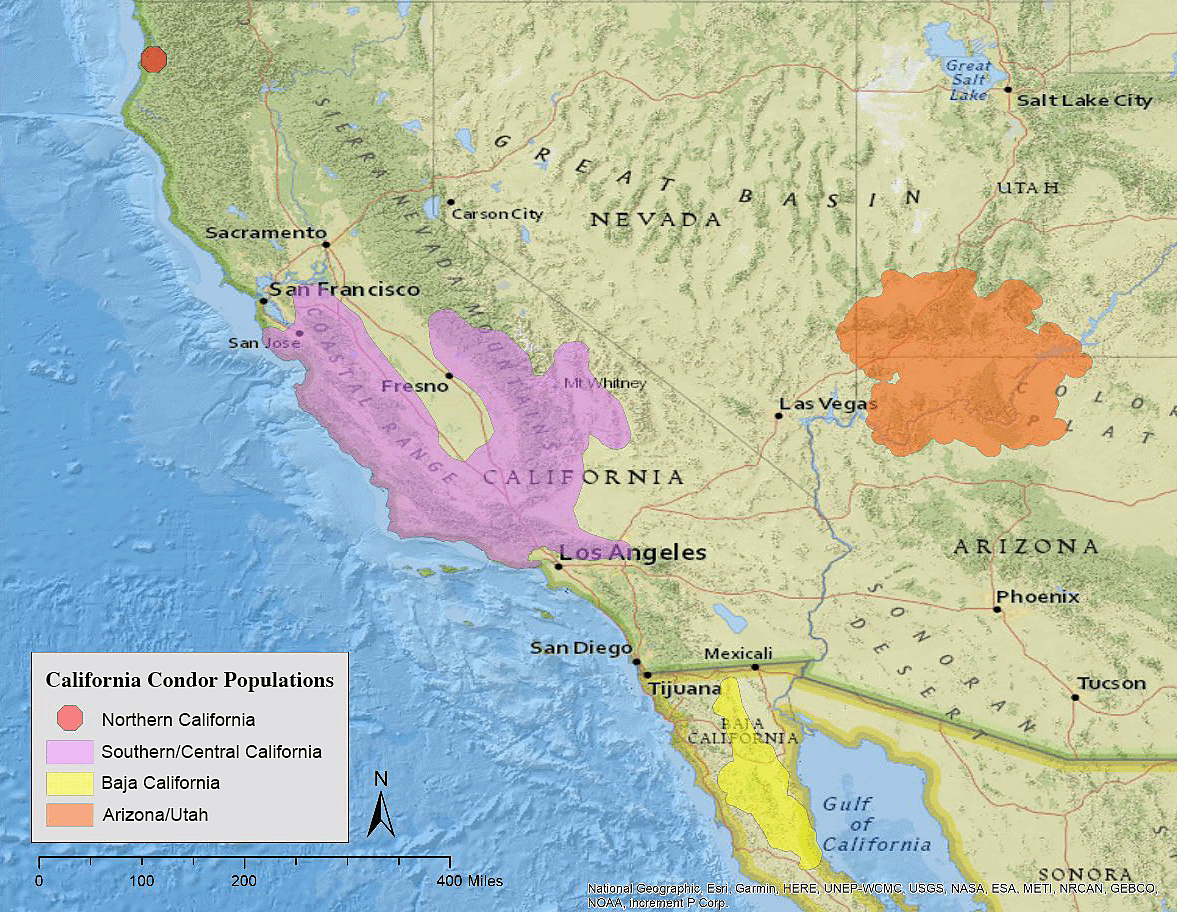
The map shows the regions where the California condor is currently found: northern Arizona, southern Utah and California in the United States and Baja California in Mexico.
CREDIT: 5-YEAR REVIEW CALIFORNIA CONDOR / US FISH AND WILDLIFE SERVICE
The California Condor Recovery Program produced its first results in a short time. In 1988, just one year after the collection of the last wild condors, researchers at the San Diego Zoo announced the first captive birth of a California condor chick.
The technique of double or triple clutching followed, to greater success. Condors are monogamous and usually have a single brood every two years, explains Fernando Gual, who until October 2024 was director general of zoos and wildlife conservation in Mexico City. But if for some reason they lose an egg at the beginning of the breeding season — either because it breaks or falls out of the nest, which is usually on a cliff — the pair produces a second egg. If this one is also lost or damaged, they may lay a third. The researchers learned that if they removed the first egg and incubated it under carefully controlled conditions, the condor pair would lay a second egg, which was also removed for care, leaving a third egg for the pair to incubate and rear naturally.
This innovation was followed by the development of artificial incubation techniques to increase egg survival, as well as puppet rearing, using replicas of adult condors to feed and care for the chicks born in captivity. That way, the birds would not imprint on humans, reducing the difficulties the birds might face when integrating into the wild population.
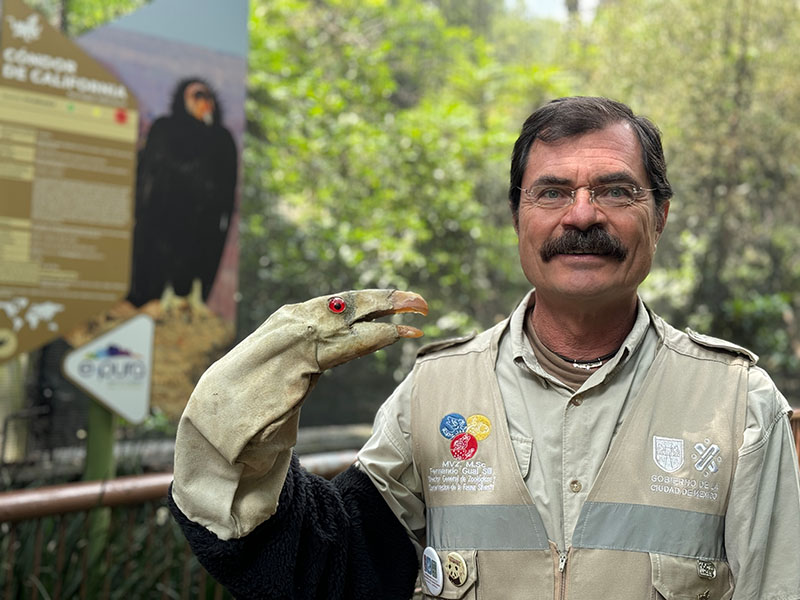
Fernando Gual, former director general of zoos and wildlife conservation in Mexico City, shows a puppet that imitates the head of an adult condor, a key tool in the artificial rearing of chicks. This technique, developed in the zoos of San Diego and Los Angeles, allows condors to feed without becoming accustomed to humans, preserving natural instincts for their future release into the wild.
CREDIT: IVÁN CARRILLO
Xewe (female) and Chocuyens (male) were the first condors to triumphantly return to the wild. The year was 1992, and the pair returned to freedom accompanied by a pair of Andean condors, natural inhabitants of the Andes Mountains in South America. Andean condors live from Venezuela to Tierra del Fuego and have a wingspan about 12 inches larger than that of California condors. Their mission here was to help to consolidate a social group and aid the birds in adapting to the habitat. The event took place at the Sespe Condor Sanctuary in the Los Padres National Forest in California. In a tiny, tentative way, the California condor had returned.
By the end of the 1990s, there were other breeding centers, such as the Los Angeles Zoo, the Oregon Zoo, the World Center for Birds of Prey in Boise, Idaho, the San Diego Zoo and the San Diego Zoo Safari Park. Then, in 1999, the first collaboration agreements were established between the United States and Mexico for the reintroduction of the California condor in the Sierra de San Pedro Mártir National Park. The number of existing California condors increased from just over two dozen in 1983 to more than 100 in 1995, some of which had been returned to the wild in the United States. By 2000, there were 172 condors and by 2011, 396.
By 2023, the global population of California condors reached 561 individuals, 344 of them living in the wild.
Genetics: Key ally in the reintroduction of the condor
In a laboratory at the San Diego Zoo in Escondido, California, a freezer full of carefully organized containers with colored labels is testament to the painstaking scientific work that supports the California Condor Recovery Program. Cynthia Steiner, a Venezuela-born biologist, explains that the DNA of every individual California condor is preserved there. This includes samples of birds who have died and those that are living, some 1,200 condors in total.
“If science wasn’t behind the reintroduction and recovery program it would have been very complicated, not only to understand what the most important hazards are that are affecting condor reproduction and survival, but also to do the management at the breeding centers and in the wild,” says Steiner, who is associate director of the Genetic Conservation Biology Laboratory at the Beckman Center for Conservation Research.
As she and colleagues outlined in an article in the Annual Review of Animal Biosciences, genomic information from animals at risk of extinction can shed light on many aspects of wildlife biology relevant to conservation. The DNA can reveal the demographic history of populations, identify genetic variants that affect the ability of populations to adapt to changing environments, demonstrate the effects of inbreeding and hybridization, and uncover the genetic basis of susceptibility to disease.
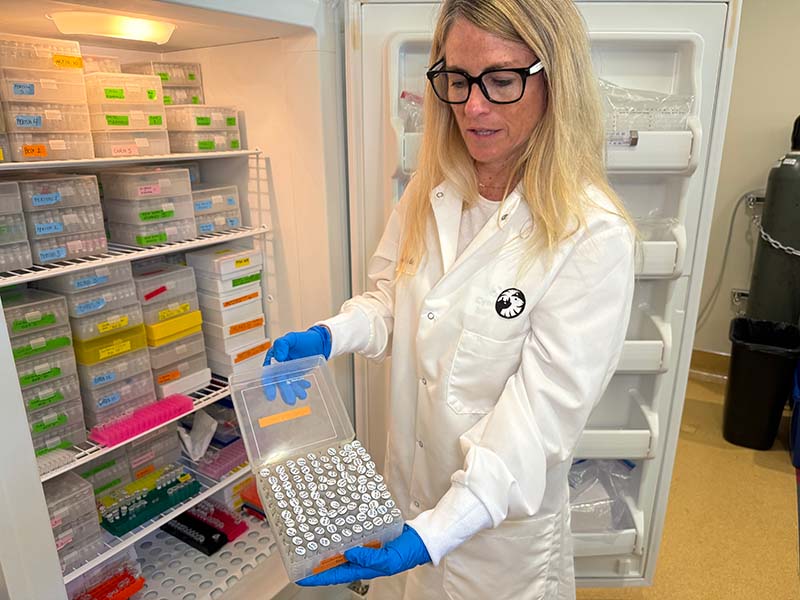
Biologist Cynthia Steiner stands in front of a freezer in the Genetic Conservation Biology Laboratory at the Beckman Center for Conservation Research, where the DNA of some 1,200 California condors is stored.
CREDIT: IVÁN CARRILLO
Genetic analysis of the California condor, for example, has led to the identification of inherited diseases such as chondrodystrophy — a disorder that causes abnormal skeletal development and often leads to the death of embryos before eggs can hatch. This finding served to identify carriers of the disease gene and thus avoid pairings that could produce affected offspring.
Genetic research has also made it possible to accurately sex these birds — males are indistinguishable from females to the naked eye — and to determine how individuals are related, in order to select breeding pairs that minimize the risk of inbreeding and ensure that the new condor population has as much genetic variability as possible.
Genetics has also allowed the program to determine the paternity of birds and has led to the discovery that the California condor is able to reproduce asexually using parthenogenesis, in which an embryo develops without fertilization by sperm. “It was an incredible surprise,” says Steiner, recalling how the team initially thought it was a laboratory error. They later confirmed that two chicks had, indeed, developed and hatched without any paternal genetic contribution, even though the females were housed with fertile males. It was the first record of this phenomenon in a bird species.
The complete decoding of the California condor genome, published in 2021, also revealed valuable information about the bird’s evolutionary history and prehistoric abundance. Millions of years ago, it was a species with an effective population of some 10,000 to 100,000 individuals. Its decline began about 40,000 years ago during the last ice age, and was later exacerbated by human activities. Despite this, Steiner says, the species retains a genetic variability similar to birds that are not endangered.
A problem with lead
Despite these great efforts and a renewed understanding of the species, threats to the condor remain.
In the 1980s, when efforts to monitor the last condors in the wild intensified, a revealing event took place: After 15 of them died, four were necropsied and the cause of death of three of them was shown to be lead poisoning.
Although these Cathartiformes — from the Greek kathartes, meaning “those that clean” — are not usually prey for hunters, their scavenging nature makes them indirect victims of hunter bullets, which kill them not by their impact, but by their composition. Feeding on the flesh of dead animals, condors ingest fragments of lead ammunition that remain embedded in the carcasses.
Once inside the body, lead — which builds up over time — acts as a neurotoxin that affects the nervous, digestive and reproductive systems. Among the most devastating effects is paralysis of the crop, the organ where condors store food before digesting it; this prevents them from feeding and causes starvation. Lead also interferes with the production of red blood cells, causing anemia and progressively weakening the bird, and damages the nervous system, causing convulsions, blindness and death.
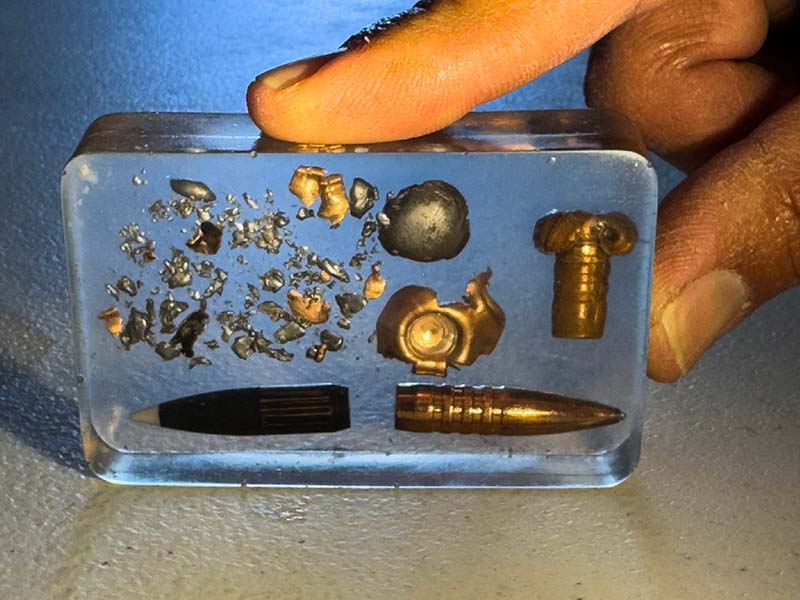
This educational tool for hunters shows how lead bullets (left) and copper bullets (right) disintegrate inside an animal’s body. It highlights the importance of not using lead ammunition, which disintegrates into many small fragments that could then be ingested by condors feeding on the remains of the slain animal. Ingesting lead can cause neurological and reproductive damage, and may be fatal.
CREDIT: PATRICIO ROBLES GIL
Efforts in the United States to mitigate the threat of lead to the condors have been extensive. Since the 1970s, several strategies have been implemented, such as provision of lead-free food for condors, campaigns to educate hunters about the impact of lead bullet use on wildlife, and programs showing conservation area visitors how important birds are to the ecosystem. Government regulations have also played a role, like the Ridley-Tree Condor Preservation Act of 2007, which mandates the use of lead-free ammunition for big-game hunting within the condor’s range in California. However, these efforts have not been sufficient.
According to the 2023 State of the California Condor Population report, between 1992 and 2023, 137 condors died from lead poisoning — 48 percent of the deaths with a known cause recorded in that period. The only population partially spared is in Baja California, where hunting is much less common. Only 7.7 percent of the deaths there are attributable to lead, according to Porras Peña’s records.
Will the condors become self-sufficient again?
The 1996 California Condor Recovery Plan notes that a self-sustaining condor population must be large enough to withstand variations in factors such as climate, food availability and predators, and permit gene flow among the various clans or groups. The document establishes the objective of changing the status of the California condor from “endangered” to “threatened” under the US Endangered Species Act. To achieve this, there must be two reintroduced populations and one captive population, each with at least 150 individuals, including a minimum of 15 breeding pairs to ensure a positive growth rate — meaning that more condors are born than die.
Today, released California condor populations are distributed in several regions: Arizona and Utah are home to 90 birds in the wild, while California has 206. In Baja California, 48 condors fly in the wild. According to the calculations of Nacho Vilchis, associate director of recovery ecology at the San Diego Zoo Wildlife Alliance, it will take 10 to 15 years to have a clearer picture of how long it will take for the reintroduction program to be a complete success — to make condor populations self-sustaining.
So far, the reality is that all populations depend on human intervention to survive. It is a task carried out by biologists, technicians and conservationists, who face steep cliffs, rough terrain and other obstacles to closely monitor the progress of the released birds and, above all, the development of chicks born in the wild.
Juan Vargas Velasco tells epic stories of how he has rappelled down steep cliffs in San Pedro Mártir National Park, facing attacks from the nest’s parent defenders in order to examine the chicks. “There is a perception that when you release a condor it is already a success, but for there to be real success, you have to monitor them constantly,” he says. “We follow them with GPS, with VHF telemetry, to make sure that the animals are adapting, that they find water and food. To release animals without monitoring is to leave them to their fate.”
The costs of managing the species in the field are not small. For example, the GPS transmitters needed to track the condors in their natural habitat cost $4,000, and subscription to the satellite system costs $80 per month per bird, Vilchis says. Other costs associated with the project, he adds, involve the construction of pre-release aviaries, laboratory analyses to monitor the birds’ health, and the provision of supplementary food in the initial stages of reintroduction. A key to ensuring the survival of the California condor is to secure funding for the species’ recovery program, notes the US Fish and Wildlife Service’s five-year report.
Each of the California Condor Recovery Program’s breeding and release sites in the United States operates as a nongovernmental organization that raises funds to finance the program. On the other side of the border, the program receives logistical support and equipment from US organizations, as well as funding from the philanthropic program “I’m Back BC Condor,” which helps to support the birds in the wild through private donations.
From Chapultepec to the San Pedro Mártir Mountain Range
A California condor hatchling peeks timidly through the protective mesh of the aviary at the Chapultepec Zoo, as one of its parents spreads its vast wings and flies over the enclosure. This space in the heart of Mexico City, one of the largest and most populated metropolises in the world, is part of the condor reintroduction effort in Mexico, a program that has been key to the recovery of the population in the Sierra de San Pedro Mártir in Baja California.
In 2002, the first condors released in Mexico came from the Los Angeles Zoo. In 2007, the Chapultepec Zoo received its first two male condors, with the goal of implementing an outreach and environmental education program while the team learned to handle the birds. After an assessment in 2014, it was confirmed that the zoo met the requirements for reproduction, permitting the arrival of two females. Breeding pairs were successfully formed and, in 2016, the first hatchlings were born.
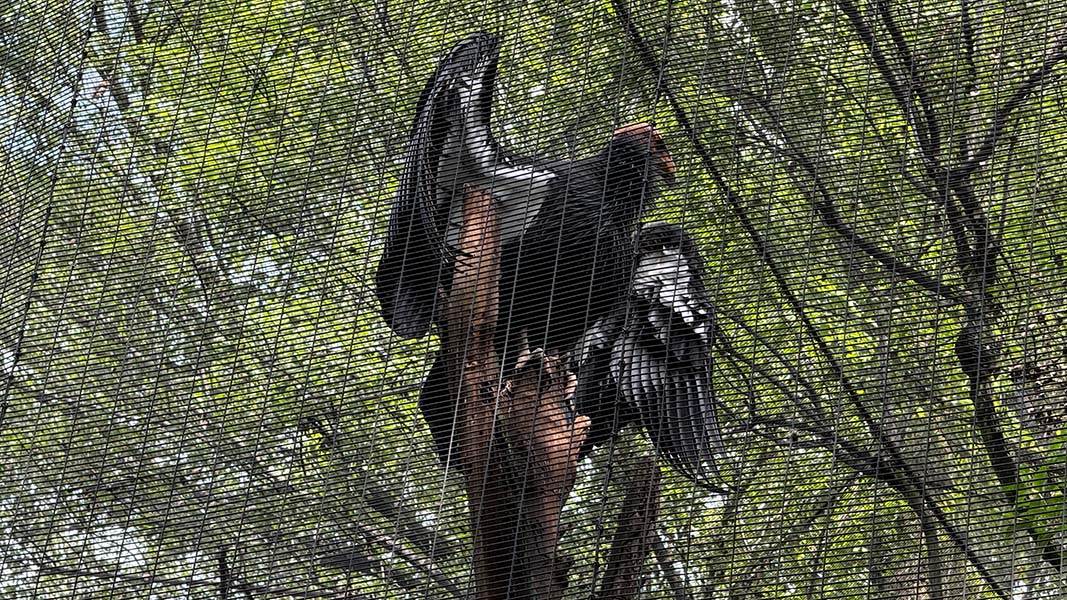
A condor at the Chapultepec Zoo in Mexico City.
CREDIT: IVÁN CARRILLO
Today, Chapultepec Zoo not only houses a breeding center but also has built its own “frozen zoo,” formally known as the Genomic Resource Bank, which stores sperm, ovarian tissue and DNA samples from nearly 100 wild animal species, many of them endangered. “More than a zoo, it’s a library,” says Blanca Valladares, head of the Conservation Genomics Laboratory within the Mexico City Conservation Centers.
Collaboration between Mexican institutions, such as the National Commission of Natural Protected Areas and the National Commission for the Knowledge and Use of Biodiversity, has been key in the development of the project in Baja California. What began in the United States has expanded across borders, creating a binational effort in which Mexico has taken an increasingly prominent role. This cooperative approach reflects the very nature of the species, which does not recognize borders in its historical habitat.
The hatchling in the aviary is preparing for its trip to Baja California. Over the next few months, it will be transported through air and over land, under the care of dozens of people, to the pre-release aviary in San Pedro Mártir, where it will spend a period of adaptation before being released. Baja California has been recognized by specialists as one of the best places for the recovery of the species, thanks to its pristine forest, a human population a tenth the size of California’s (4 million versus 40 million), and a low level of lead and diseases. Porras Peña says that the condor population in the region seems to have reached a point of stability: It remained stable for seven years without the need to release new condors bred in captivity.
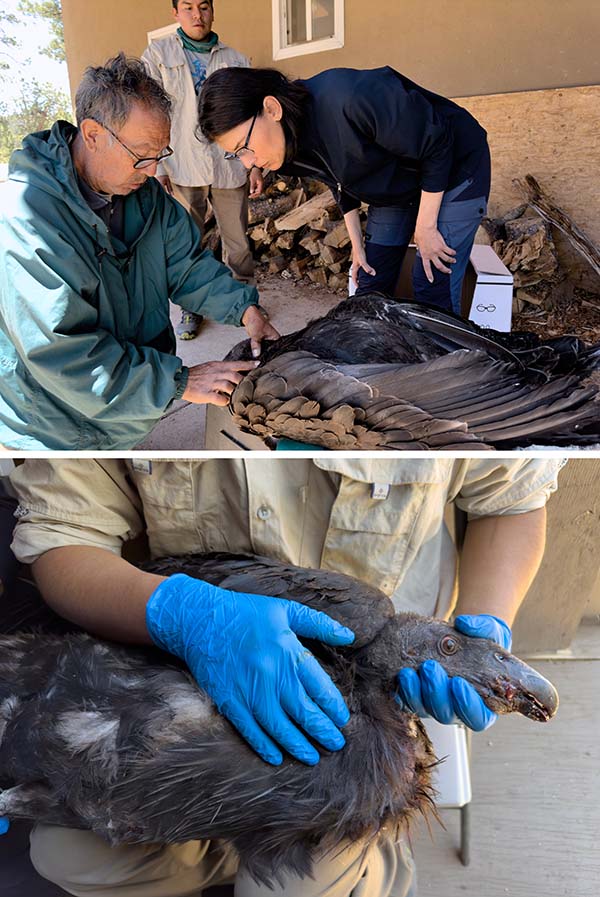
These photos show the struggle to save a California condor after it was attacked by a puma in the Sierra de San Pedro Mártir. Despite the efforts of the medical and conservation team, the condor did not survive.
CREDIT: PATRICIO ROBLES GIL
Despite titanic efforts, strict protocols and painstaking care at every stage of reintroduction, things don’t always go smoothly. In 2022, a puma attacked a pre-release aviary in the Sierra de San Pedro Mártir, where four condors, two from San Diego and two from Mexico City, were being prepared for release. The puma found a weak spot in the mesh and, with its claws, managed to reach the two condors from the United States. Porras Peña sadly describes the desperate efforts the team made to save the life of one of the injured birds, but in the end, it died. It was a devastating blow for the team, who saw years of work lost in an instant.
The incident is an ironic lesson from nature: While for decades condors were decimated as a consequence of human activity, today a natural predator snatches in seconds what has taken tireless efforts to recover — a brutal reminder that even if we rebuild a species by dint of science and sacrifice, nature will always have the last word.
Article translated by Debbie Ponchner
Editor’s note: This article was amended on February 10, 2025, to replace the caption for the photograph of bullets in resin. The previous version erroneously stated that the bullets had been removed from condors.
This article is part of Knowable Magazine’s series exploring the work of Latino scientists and emerging research affecting the US Latino community, presented in English and Spanish, and supported by the Science and Educational Media Group at HHMI. Iván Carrillo is currently a fellow of the Earth Journalism Network. This story was produced as part of Internews’ Earth Journalism Network’s 2024 Reporting Fellowship.
10.1146/knowable-020525-1
TAKE A DEEPER DIVE | Explore Related Scholarly Articles





